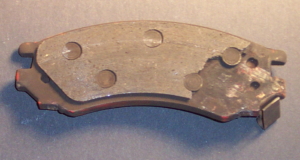 I have been seeing a lot of estimates recently that project how much “life” is left in the brake pads. This number is often expressed as a percentage. While I do realize that it is a number most consumers might be able to understand, it is misleading and often inaccurate and if you asked other technicians, you would get different numbers every time.
I have been seeing a lot of estimates recently that project how much “life” is left in the brake pads. This number is often expressed as a percentage. While I do realize that it is a number most consumers might be able to understand, it is misleading and often inaccurate and if you asked other technicians, you would get different numbers every time.
If you were to properly estimate the percentage of material worn on a brake pad, you would first have to know how much was there in the first place. This number is near impossible to find in books or on a database. Sure you could get a new set of pads for the vehicle and use that as a reference, but would you really want to keep that many pads around for just reference?
Every vehicle has a “minimum wear specification” for the brake pads. This number is typically between two and three millimeters. At this point, caliper piston travel maybe too excessive, or the friction material attachment method may lose its effectiveness and cause the friction material to shear away from the backing plate.
The minimum wear specification is measured from the backing plate to the lowest point of wear on the friction’s face that contacts the rotor. On some vehicles, this can be measured without disassembly.
I love a percentage just as much as the next guy. But, “eyeballed” percentages should not be used when inspecting brakes. It is a practice that should be stopped right now!